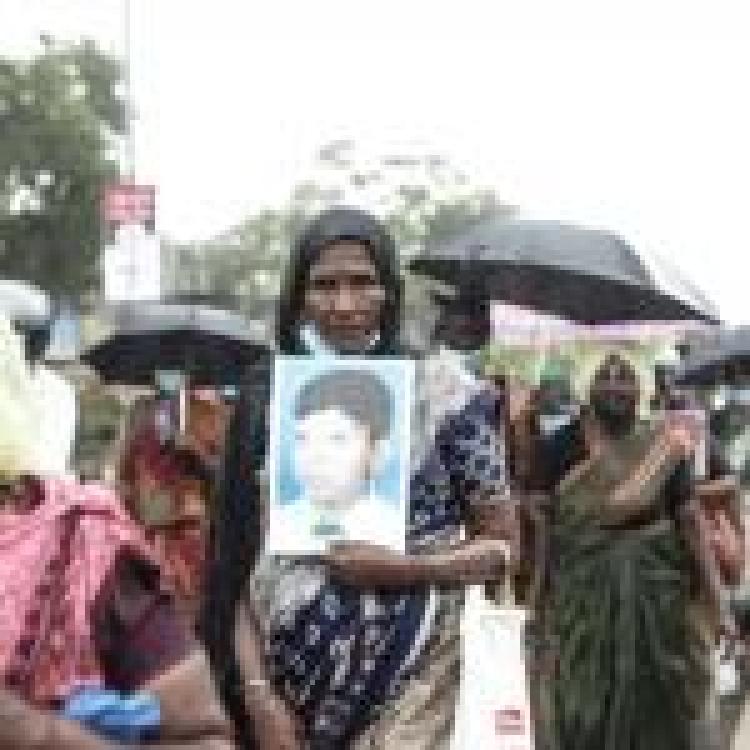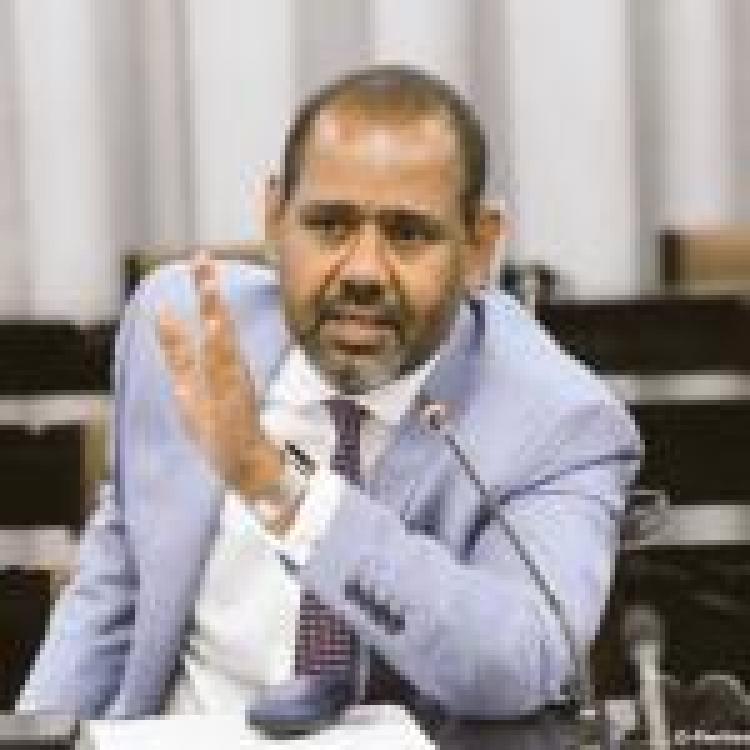Several articles and opinions in publications such as the Tamil Guardian and on social media, have criticized and rightly so, the process undertaken by the Global Tamil Forum (GTF) to develop the Himalayan Declaration (HD) and the subsequent meeting with the genocidal war criminal Mahinda Rajapakse. Nevertheless, it appears critical and objective analyses of the document itself are in short supply. An assessment is therefore overdue, on how effectively, this document, brought forward with so much fanfare, serves the interests of the Tamils in Sri Lanka.
The assessment is based on two obvious criteria. One; justly and equitably addressing the genocide perpetrated from literally independence onwards, reaching its horrifying apex at the end of the armed conflict in 2009. Two; establishing a society that provides equal rights to the Tamils and the other ethnic groups across the island.
The lens that I propose to use in my analysis is whether the six statements in the HD, contain or at minimum, lend themselves to the establishment of tangible and clear-cut metrics that can move the island’s socio-political environment towards addressing the above criteria. Unfortunately, the HD when viewed through this lens fails abjectly. Its language, a confusing mix of popular buzzwords interspersed with trite phrases exhorting Sri Lankans towards an ill-defined utopia does nothing to address the issues of the Tamils. While no information appears to be available on the authors of this mishmash gobbledegook, I suspect that the well-meaning group crafting this non-statement fondly imagined the inclusion of words and phrases such as “pluralistic”, “individual and collective rights”, “establishing trust” and “accountability” would create a document that would move the dialogue between the Tamils and Sinhalese community forward. Unfortunately, as the following clause-by-clause analysis demonstrates, that expectation is as far as possible from reality.
“A Sri Lanka where every individual can live peacefully with dignity, trust, and no fear or suspicion, enjoying equal rights.”
To be fair by the authors, the preamble is a reasonable and effective start, espousing several lofty sentiments, which if implemented would indeed be a good foundation for a just and equitable society. Unfortunately, the following six statements, which should not only build upon the preamble but specify how the principles in the preamble should be implemented, do nothing of that sort.
“Preserving and promoting the pluralistic character of the country where no community feels threatened about losing its identity and pride of place.”
Statement #1 simply repeats the sentiments in the preamble, using different words and sadly lacks any kind of language that would allow for the development of metrics for evaluation.
“Overcoming the economic crisis, selecting an appropriate development model which encourages local production, facilitating involvement and investment from overseas Sri Lankans and others, ensuring the country is in a growth trajectory and making Sri Lanka firmly a middle-income country.”
Sri Lanka is facing an unprecedented economic crisis, revenue streams are barely adequate to meet interest payments, with all other expenditure requirements funded via borrowings, exacerbating the country’s perilous debt position. This is a country that is effectively bankrupt. There are many reasons for this financial crisis, however, the most significant is a bloated public sector including a totally unnecessary yet one of the largest per capita armed forces in the world, along with state-owned enterprises such as Air Lanka, that continue to be in the red. The latter increases annually accumulated losses that are already far beyond Sri Lanka’s ability to address. Statement#2, purporting to establish a sustainable and expanding economy should reference these fundamental issues and the almost incomprehensible lack thereof, divorces it from reality.
“Arriving at a new constitution that guarantees individual and collective rights and promotes equality and equal citizenship among all peoples, ensures accountable institutions and guarantees adequate devolution of powers to the provinces, and until such time focus on the faithful implementation of provisions of sharing of powers in the existing constitution.”
“Devolving power in a united and undivided country, accepting the religious, cultural, and other identities of people and respecting those identities, and working towards establishing trust between ethnic groups and religious groups.”
Statements #3 and #4 are perhaps the biggest lost opportunity in the entire HD. The current constitution is not secular, enshrining Buddhism as the country's primary religion, conferring a constitutional advantage to its adherents. This is perhaps the biggest obstacle towards the establishment of an equitable society, not only in terms of the required constitutional framework but also the culture of the majority community. It is unrealistic to expect the Sinhala Buddhists to wholeheartedly support equity when the constitution itself confers superiority to them. Supporters of the HD have pointed out that including a requirement for a secular constitution may have made it impossible for the Buddhist monks to sign the HD, which in my opinion, is an acceptable outcome. It would have demonstrated to the international community, in no uncertain terms, that even the minority of the Buddhist monks in Sri Lanka who were willing to engage in dialogue, were fully also invested in the continuance of a constitutionally mandated semi-theocratic state that confers advantages on one community. This is anathema to almost every country in the world that has successfully implemented a civil and equitable society and in my opinion, will showcase to the world the intransigence of the Buddhist monks, effectively the country’s decision-makers regardless of the party in power.
“Envision a Sri Lanka that is reconciled and committed to learning from its past and creating measures including accountability to ensure that such suffering never occur again.”
Based on the rather low bar in the previous four statements, #5 is positive. The inclusion of the term accountability does allow for the creation of metrics, if and when this statement is ever implemented. Nevertheless, domestic accountability measures in the past have failed completely. History should have taught the HD authors that international monitoring is essential for any accountability measures, particularly those aimed at not repeating the racist and genocidal past of Sri Lanka. While I have no wish to nitpick, grammatical accuracy is essential to any statement, and “occur” should have been in the plural. This error is perhaps symptomatic of the sloppy thinking underlying the entire HD.
“Complying with bilateral and multilateral treaties and international obligations, taking steps to follow independent and dynamic foreign policy, and ensuring the country takes its pride of place among the democratic, peaceful, and prosperous nations of the world.”
Statement #6 is perhaps the weakest of all the six statements, repeating, as it were, motherhood phrases. Obviously, treaties and international obligations need to be complied with and including an exhortation to do so, in the HD, serves no purpose whatsoever. Likewise, “independent and dynamic foreign policy” when applied in the context of a debt-ridden, semi-bankrupt country represents at best a fond and fanciful hope for a better future and at worst a laughable expectation.
The willingness of some Buddhist monks, the primary architects of the failure of every equitable solution to address the legitimate demands of the Tamils, to consent to dialogue has been greeted with approbation in some quarters. The willingness to dialogue, is in itself, unworthy of approbation. Rather praise is only due, if the results of the dialogue confer a realistic way forward, particularly to the injured party. As far as the HD is concerned, the results are woefully inadequate to warrant any approbation. The entire exercise allowed the Buddhist monks to demonstrate to the world their willingness to dialogue without testing at all their comfort for real meaningful change, sadly one more instance in a long line, of the majority community successfully hoodwinking well-meaning Tamils.
______
The author is a Tamil Canadian, who is active in the community and has consistently supported charitable projects in the North-East of the island, as well as Tamil community organizations in Toronto. This, until recently, included the Canadian Tamil Congress (CTC).

.jfif)








